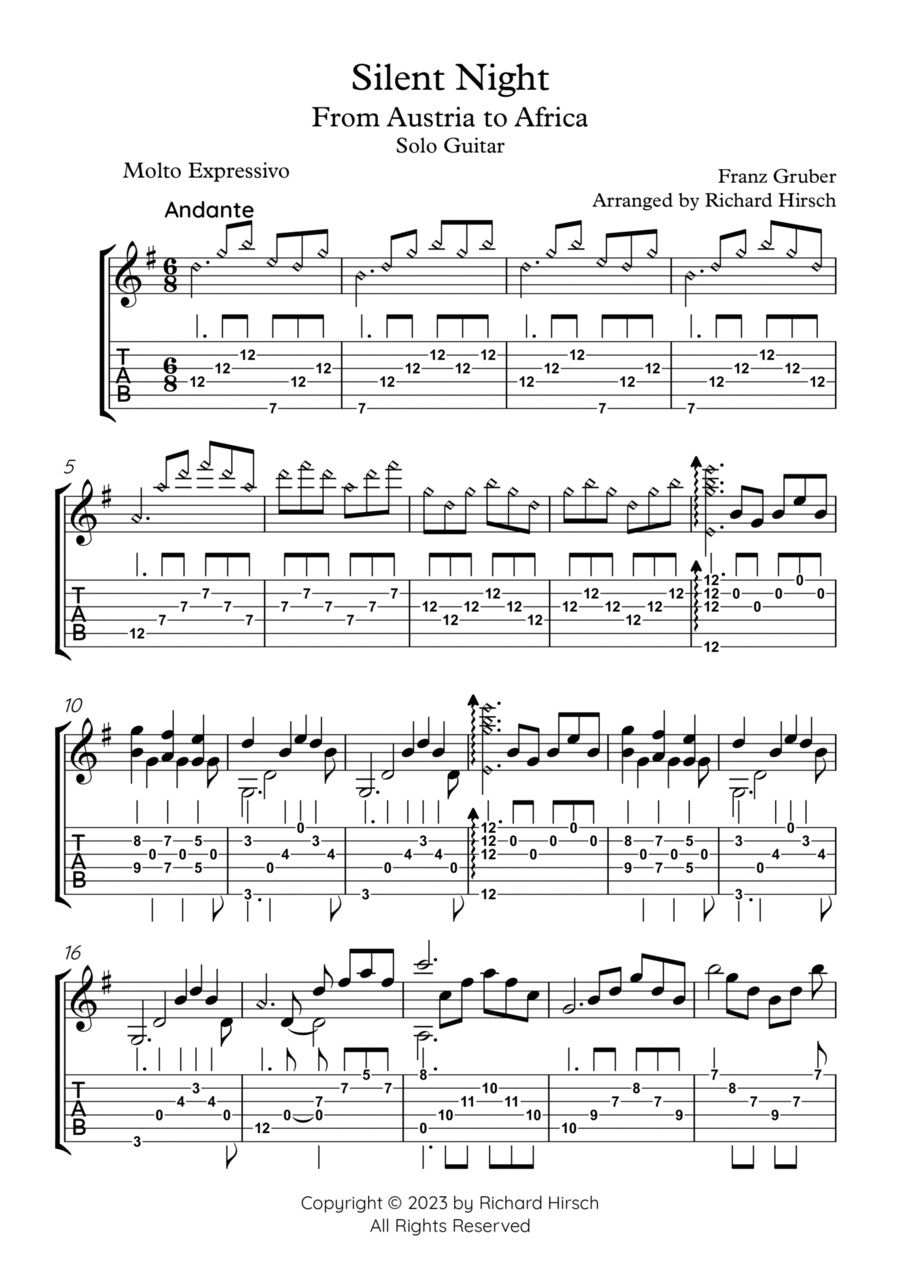Solo Guitar - Level 4 - Digital Download SKU: A0.1153109 Composed by Franz Xaver Gruber. Arranged by Richard Hirsch. Christmas,Multicultural,Religious,Standards,Traditional,World. Individual part. 8 pages. Richard Hirsch #753352. Published by Richard Hirsch (A0.1153109). An arrangement for solo guitar of the all-time favourite Christmas carol composed by Franz Gruber. The arrangement starts with an introduction of the melody in arpeggios of natural harmonics and moves into broken chords mixed with arpeggios for the first rendering of the song in 6/8 time. In the second part, at the shift to 4/4 time, the melody is rendered in an African inspired version with natural harmonics reminiscent of tunes played on an African kalimba (thumb harp) woven into the broken chords and arpeggios. As the speed increases, and the volume decreases, the arrangement moves steadily toward a total kalimba version. I like to think of the first part of the arrangement as symbolising a night in the little Austrian village where Gruber lived and composed the song. The natural harmonics and base notes and treble notes on open strings denoting the village chapel bells ringing on Christmas Eve. The second part tries to give a feel for how the melody can stand as a symbol of our common human origins in Africa, celebrating the birth and unity of humanity. The arrangement is within reach of intermediate to advanced students of guitar and is a good introduction to natural harmonics on the twelfth, seventh, and fifth frets. The African inspired polyrhythm fingerpicking in the second part consists basically of the thumb alternating with the index and middle fingers in a repetitive cycle. The second part is notated in 4/4 time, but can perhaps be more easily be read and played as 8/8 time, as practically everything, especially towards the end of the arrangement consists of eight notes. The polyrhythmic second part should have an accent on the downbeat of the first beat of the measure followed by an accent at 3and (an upbeat), just before the fourth and final beat of the measure. Reading the four part harmony of the score may at first present a challenge but if played basically as eight notes followed by eight notes everything should come out right in the end. Refer to the mp3 version provided with the score if in doubt. I do not mark the natural harmonics explicitly in the tablature, there are simply too many of them. The diamond shaped notes in the notation denoting harmonics are found directly above the corresponding fingerings in the tablature. It has been a real joy to work with this arrangement of the song and I hope it brings joy to others in playing it, giving new life to the traditional melody.
